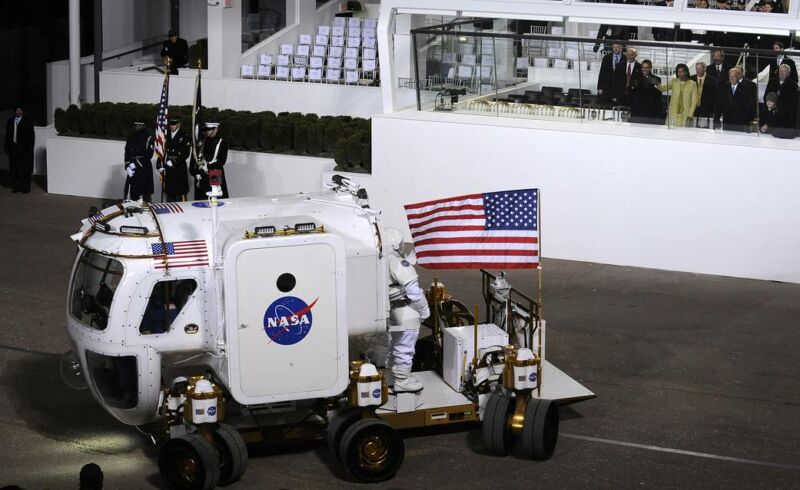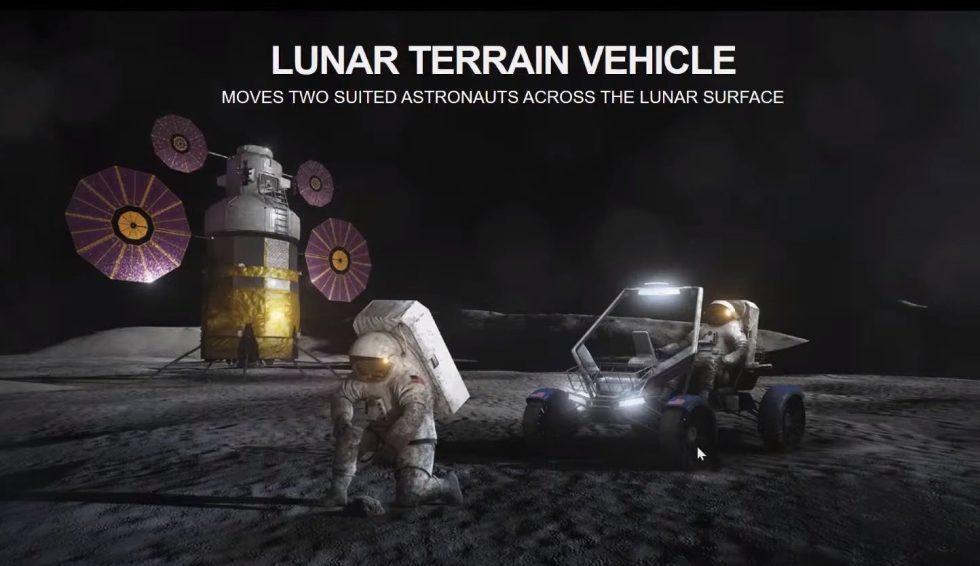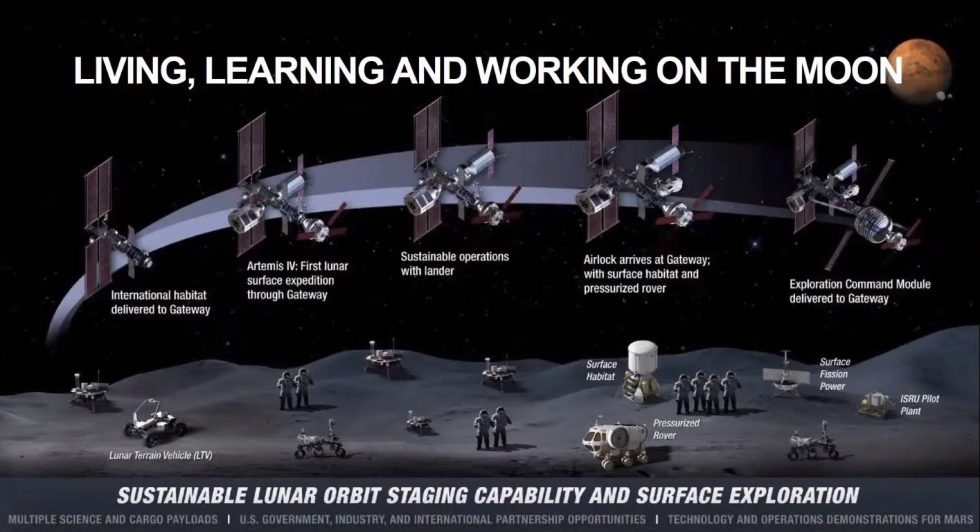
Last year Vice President Mike Pence directed NASA to return humans to the Moon by 2024. NASA has since been working hard toward this goal, creating the Artemis Program and issuing contracts for three different teams to begin developing lunar landers.
But in his speech, Pence went beyond just setting a date for the landing. He also said the space agency should "establish a permanent base there, and develop the technologies to take American astronauts to Mars and beyond. That’s the next giant leap."
Now, we're starting to get some details on what that may look like. On Friday a NASA engineer named Mark Kirasich, who is acting director of NASA's Advanced Exploration Systems, spoke at a meeting of the Solar System Exploration Research Virtual Institute (see video). During his presentation, Kirasich laid out NASA's plans for lunar surface activities.
Assuming NASA makes the goal of landing humans on the Moon by 2024—which is theoretically possible but would require a lot of budgetary, political, and technical factors to fall the space agency's way—a "Lunar Terrain Vehicle" would follow in 2025. This would be delivered via the "Commercial Lunar Payload Services" program, in which NASA has a pool of private companies to choose from for lunar delivery services.
This rover would be a relatively simple, unpressurized vehicle similar to what astronauts had at their disposal during the final three Apollo missions to the Moon. "This is the very first of the surface elements that we’re going to build," Kirasich said. Following an acquisition strategy meeting this week, he said NASA will move to formally establish a program office for the rover at the Johnson Space Center in Houston.
The next step would involve development of a pressurized rover. "This thing is the coolest element I’ve ever seen for people," Kirasich said. "It's like an RV for the Moon. We are going to try and develop this jointly with JAXA, as a Japanese contribution to our plan."
Last week NASA formalized this agreement by signing a "Joint Exploration Declaration of Intent" that includes Japanese contributions to the Lunar Gateway, in orbit and surface exploration. This potentially means that Japan's space agency, JAXA, will lead development of a critical piece of the Artemis Program architecture, a rover that doubles as a habitat for up to two people for 14 days. Kirasich did not provide a date for when this larger rover might launch.
The Japanese partnership is notable because NASA spent more than half a decade in the 2000s working on the Lunar Electric Rover, which was one element planned to facilitate lunar astronaut stays for as long as 180 days. This was part of the Constellation Program, which was canceled in 2010 after it was found to be behind schedule and over budget. Asked whether it was justifiable for NASA to delegate this work to JAXA and its commercial partner Toyota, Kirasich said it was necessary.
"Our job depends on federal funding, so we have to listen to our constituents who fund us," he said. "It’s very important to our leadership at the moment to involve JAXA in a major surface element. Number two, the Japanese, and their auto industry, have a very strong interest in rover type things. So there was an idea to, even though we have done a lot of work, to let the Japanese lead development of a pressurized rover. So right now that’s the direction we’re heading in."
A senior lunar scientist who participated in the meeting, Notre Dame's Clive Neal, said the announcement that Japan would now lead development of a pressurized habitat on the Moon came as a surprise.
"Under Constellation NASA had a sophisticated rover put together," Neal told Ars. "It's pretty sad if it’s never going to get to the Moon."
However, Neal added that he understands NASA and its administrator, Jim Bridenstine, need to broaden the appeal of the Artemis Program and bring in additional partners. Not only does that make it easier for Congress to support Artemis, as well as future presidential administrations, it helps defray the high costs of a lunar return. "NASA’s budget is stretched pretty thin, and this helps them afford to do it," he said.
reader comments
90